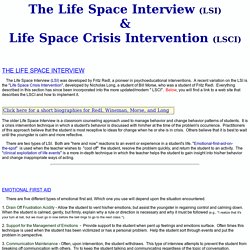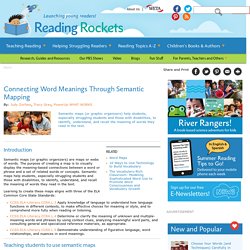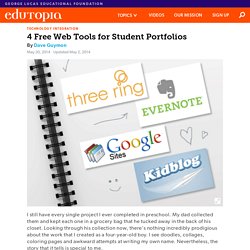

LSI. The Life Space Interview (LSI)&Life Space Crisis Intervention (LSCI) The Life Space Interview (LSI) was developed by Fritz Redl, a pioneer in psychoeducational interventions.

A recent variation on the LSI is the "Life Space Crisis Intervention", developed by Nicholas Long, a student of Bill Morse, who was a student of Fritz Redl. Everything described in this section has since been incorporated into the more updated/modern " LSCI". Below, you will find a link to a web site that describes the LSCI and how to implement it. The older Life Space Interview is a classroom counseling approach used to manage behavior and change behavior patterns of students. There are two types of LSI. There are five different types of emotional first aid. 1. 2. 3. 4. Umpire Services - The teacher makes a judgment in cases of inter-child and intra-child conflict after having reviewed all available information. This category of responses is the more involved of the two LSI techniques.
All About Adolescent Literacy. Reading Rockets. Florida Center for Reading Research. PBIS.org Home Page. PBISWorld.com Home Page. Appendix E. Connecting Word Meanings Through Semantic Mapping. Semantic maps (or graphic organizers) are maps or webs of words.

The purpose of creating a map is to visually display the meaning-based connections between a word or phrase and a set of related words or concepts. Semantic maps help students, especially struggling students and those with disabilities, to identify, understand, and recall the meaning of words they read in the text. Learning to create these maps aligns with three of the ELA Common Core State Standards: Teaching students to use semantic maps You can provide your students with direct instruction on how to use semantic maps. Pick a word you don’t know from a text you are reading and mark the word. With direct instruction and repeated practice, struggling students will find that using semantic maps is a very good way of expanding their vocabulary.
Integrating technology There are many technology tools that can help students create semantic maps (including thinking maps, mind maps, bubble maps, and concept maps). Teacher Vision - TeacherVision. Portfolios. 4 Free Web Tools for Student Portfolios. I still have every single project I ever completed in preschool.

My dad collected them and kept each one in a grocery bag that he tucked away in the back of his closet. Looking through his collection now, there's nothing incredibly prodigious about the work that I created as a four-year-old boy. I see doodles, collages, coloring pages and awkward attempts at writing my own name. Nevertheless, the story that it tells is special to me. This is the effect of good portfolios. Kidblog Kidblog is unique among the web tools featured here because it is built by teachers for teachers. Google Sites If your school is fueled by Google Apps for Education, then using Google Sites to create student portfolios, or "Googlios," makes perfect sense. Evernote For classrooms with BYOD or 1:1 initiatives in place, Evernote can serve as a viable option for creating student portfolios. Three Ring A mobile app with a desktop version, Three Ring is worthy of consideration as well.